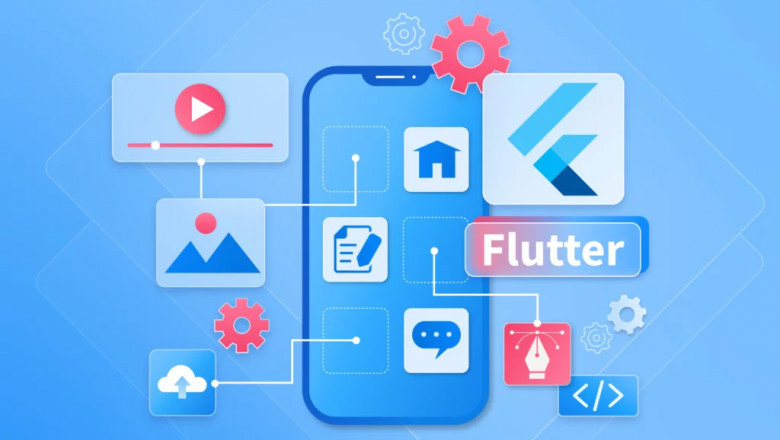views
Going Beyond Ready-Made Widgets: How to Build Custom Widgets in Flutter?
Most developers start Flutter by using ready-made widgets. They are easy to use. They save time. But if you want to create apps that are unique and powerful, you must go beyond them. Building custom widgets is a big step. It shows that you understand Flutter at a deeper level. If you are thinking of joining a Flutter Online Course, learning custom widgets should be your priority.
In cities like Delhi and Noida, the mobile app industry is booming. Companies now want developers who can build flexible and high-performance apps. Simply dragging and dropping default widgets is not enough anymore. Developers trained from a top Flutter Training Institute are now getting hired faster because they know how to make their own widgets from scratch.
Why Do You Need Custom Widgets?
Ready-made widgets are great for basic apps. But what if you need a button that changes shape when clicked? Or a profile card that rotates with a swipe? Default widgets cannot do all that. Custom widgets allow you to design whatever you imagine. You control the shape, size, color, and behavior.
Custom widgets make apps lighter. They perform faster. They look different from other apps. That is why Noida companies now prefer candidates who have completed a proper Flutter Training in Noida with a focus on real-world projects, not just theory.
Basics of Stateless and Stateful Widgets
Before creating a custom widget, you must understand Flutter’s two core types: Stateless and Stateful widgets.
Choosing the wrong type can cause slow apps or bugs. Good Flutter Training programs teach you how to pick the right type early.
Steps to Build Your Own Custom Widget
Building custom widgets is easier than it sounds.
First, you create a new Dart class. You decide if it will extend StatelessWidget or StatefulWidget. Then you write the build() method. Inside build(), you design the widget using basic Flutter elements like Container, Row, Column, Padding, and GestureDetector.
For example, if you want a button that shines when pressed, you create a StatefulWidget. You define the color changes inside the setState() function. When the user taps the button, the setState triggers and updates the widget color.
This level of control is what makes custom widgets special. Developers trained through advanced Flutter Training in Noida often show small custom widget projects in interviews to stand out.
Key Tips for Making Better Custom Widgets
- Use parameters smartly. Create widgets that accept values like color, size, and text. This makes your widgets reusable across different parts of the app.
- Keep widget trees clean. Avoid nesting too many widgets inside each other. A messy widget tree slows down the app.
- Follow Flutter’s theme system.
- Manage the state properly. Don’t update the whole widget if only a small part needs a change.
- Focus on performance. Use const constructors whenever possible. Const widgets load faster.
Why Custom Widgets Are a Skill Recruiters Look For?
In Delhi’s fast-growing tech companies, clients expect apps that are smooth and visually rich. Developers who master custom widget creation have better chances. A leading Flutter Training Institute in Delhi will always focus on these skills in its advanced projects.
In Noida, companies are now building large-scale Flutter apps, not just simple prototypes. That is why a practical Flutter Training program should always include custom widget workshops, not just theory lectures.
Advanced Concepts You Will Encounter
When you go deeper into custom widget development, you will learn about:
- InheritedWidget: To pass data deeper into the widget tree without manually forwarding it.
- Keys in Flutter: To control the identity of widgets when Flutter rebuilds them.
- Composition over Inheritance: Creating smaller widgets and combining them, instead of making one giant widget.
Learning these makes you a pro developer, ready for big projects.
Sum Up
Custom widgets help you create unique, powerful apps. StatelessWidget is for static content; StatefulWidget is for dynamic content. Writing clean, reusable code improves app performance. Cities like Delhi and Noida demand developers who can build from scratch. Joining a practical training course focusing on custom widgets can boost your career.














Comments
0 comment